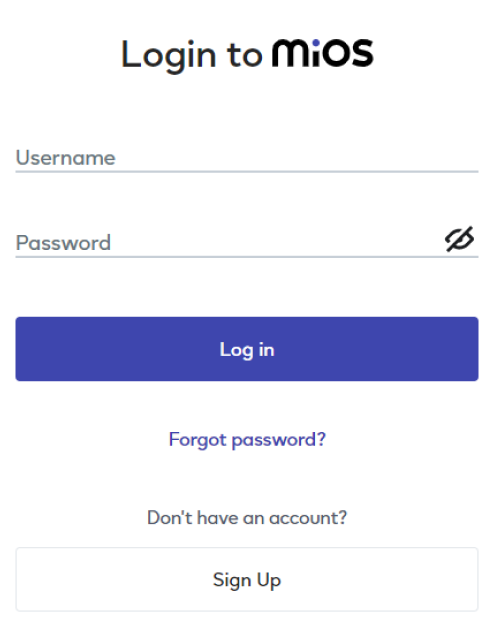
Discover smart switching with EzloPi!
Control AC lamps using solid-state relay
The EzloPi smart devices provide automation through simple, customizable use with our open-source EzloPi platform, making daily life easier and improving human-machine interactions.
Before moving into this example, it is very important to know about the device registration, provisioning and converting the ESP32 device into an EzloPi device along with knowledge of Web Flasher, MiOS Mobile Application for Android/iOS and the MiOS Web Application.
1. About this example
This project aims to control two AC lamps using solid-state relays (SSR) and push buttons, interfaced with the EzloPi device. The SSRs ensure safe and efficient switching of the AC lamps, while the push button offers a user-friendly way to toggle each lamp on or off. By integrating the EzloPi device, the system allows for custom control logic and expansion to additional features, such as remote operation or integration with sensors. This setup is ideal for applications where safe and reliable control of AC lighting is required, such as in automated home or industrial lighting systems.
3. Circuit Diagram & Interface
The following components are required for interfacing with the EzloPi device:
- ESP32 as an EzloPi smart device.
- Dual-channel solid state relay.
- Two push buttons
- Two AC lamps
The wiring diagram of ESP32 30 pin is represented as follows:
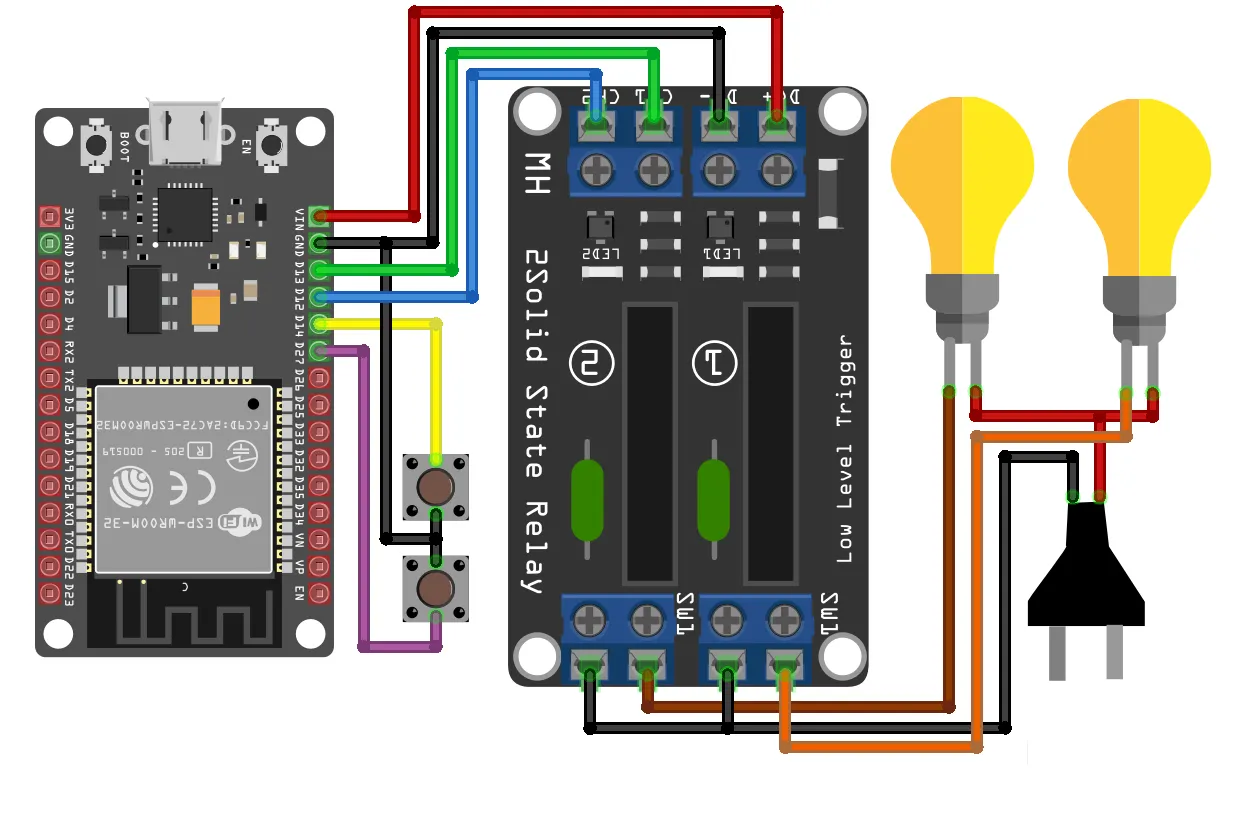
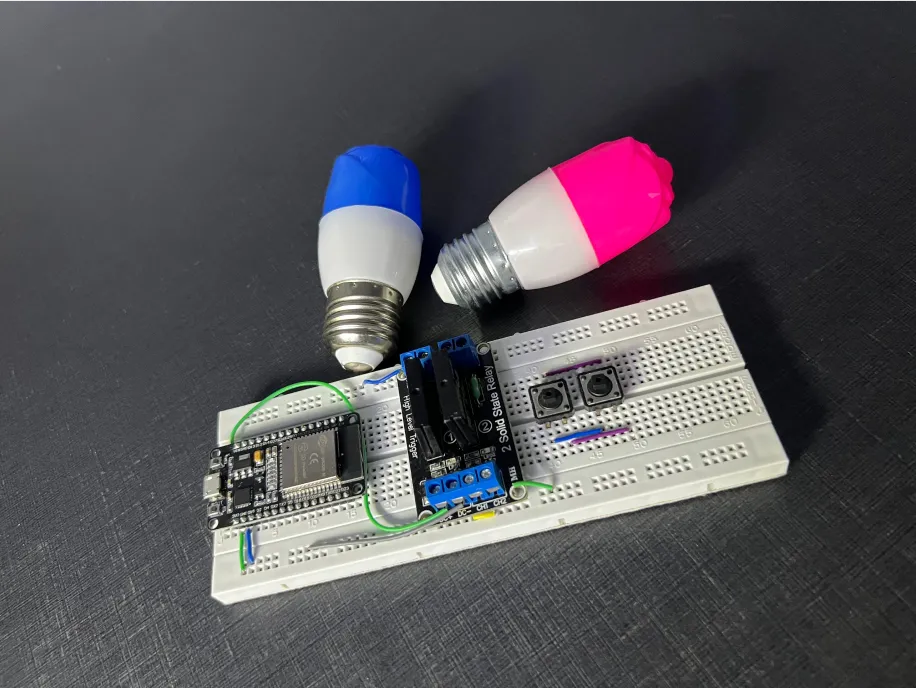
The following connections are made in order to complete the circuit setup.
From ESP32 to Two Push Buttons:
| ESP32 | Push Button 1 | Push Button 2 |
| GND | Terminal 1 | Terminal 1 |
| D14 | Terminal 2 | - |
| D27 | - | Terminal 2 |
From ESP32 to Dual Channel Solid State Relay:
| ESP32 | Solid State Relay |
| VIN | DC+ |
| GND | DC- |
| D13 | CH1 |
| D12 | CH2 |
From Solid State Relay to AC Lamp & 220V:
| Solid State Relay | AC Lamp 1 | AC Lamp 2 | 220V |
| SW1-1 | - | - | Neutral |
| SW1-2 | Terminal 1 | - | - |
| SW2-1 | - | - | Neutral |
| SW2-2 | - | Terminal 1 | - |
| - | Terminal 2 | Terminal 2 | Phase |
4. Interfacing the Solid state relays & Push buttons using the EzloPi Web Flasher
1. Set up your device/hardware by visiting config.ezlopi.com

- Log in using the credentials which you just set earlier while signing up.

- Now, click on the Connect Device button and a pop-up window will appear.
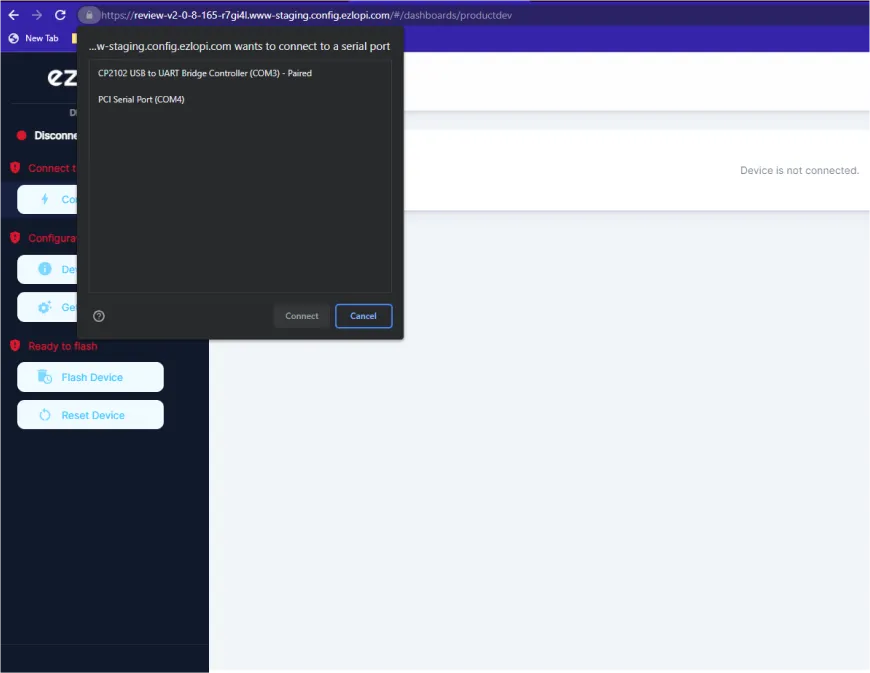
- Now, select COM Port to which your ESP32 device is connected. In our case, the COM3 port is used.
Click Connect
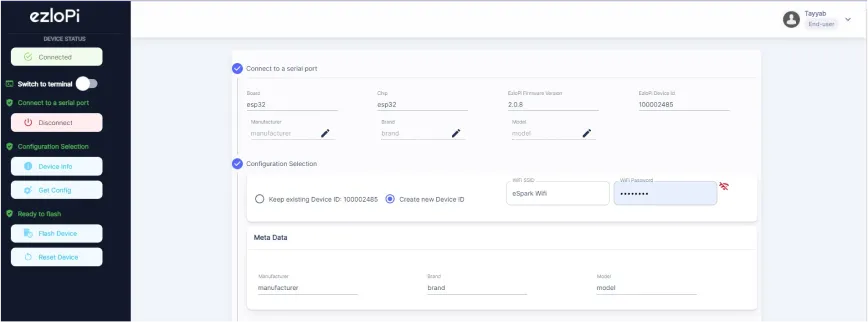
- If you are new to this and it's your first time configuring, select Create new Device ID. Enter Wifi SSID and Wifi Password.
- In the Device Configuration, tab click on Digital Input.
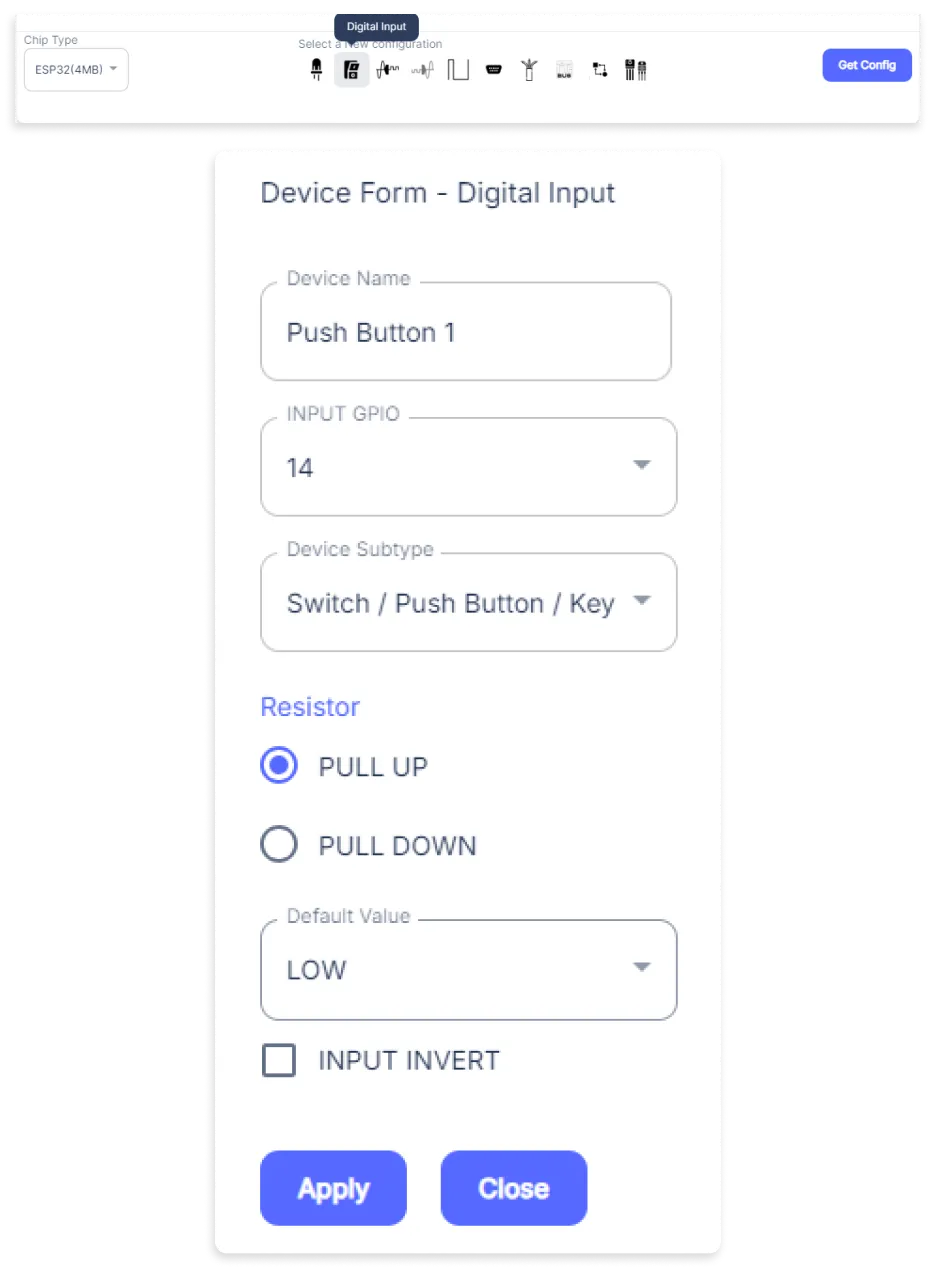
- A Digital Input window will open for inputting the following parameters:
- Set a Device name of your choosing. In our case, we set it to the Push Button 1.
- Set INPUT GPIO to 14.
- Set Device Subtype to Switch / Push Button / Key.
- Set Resistor to PULL UP.
- Then Click Apply Button.
- In the Device Configuration, tab click on Digital Input.
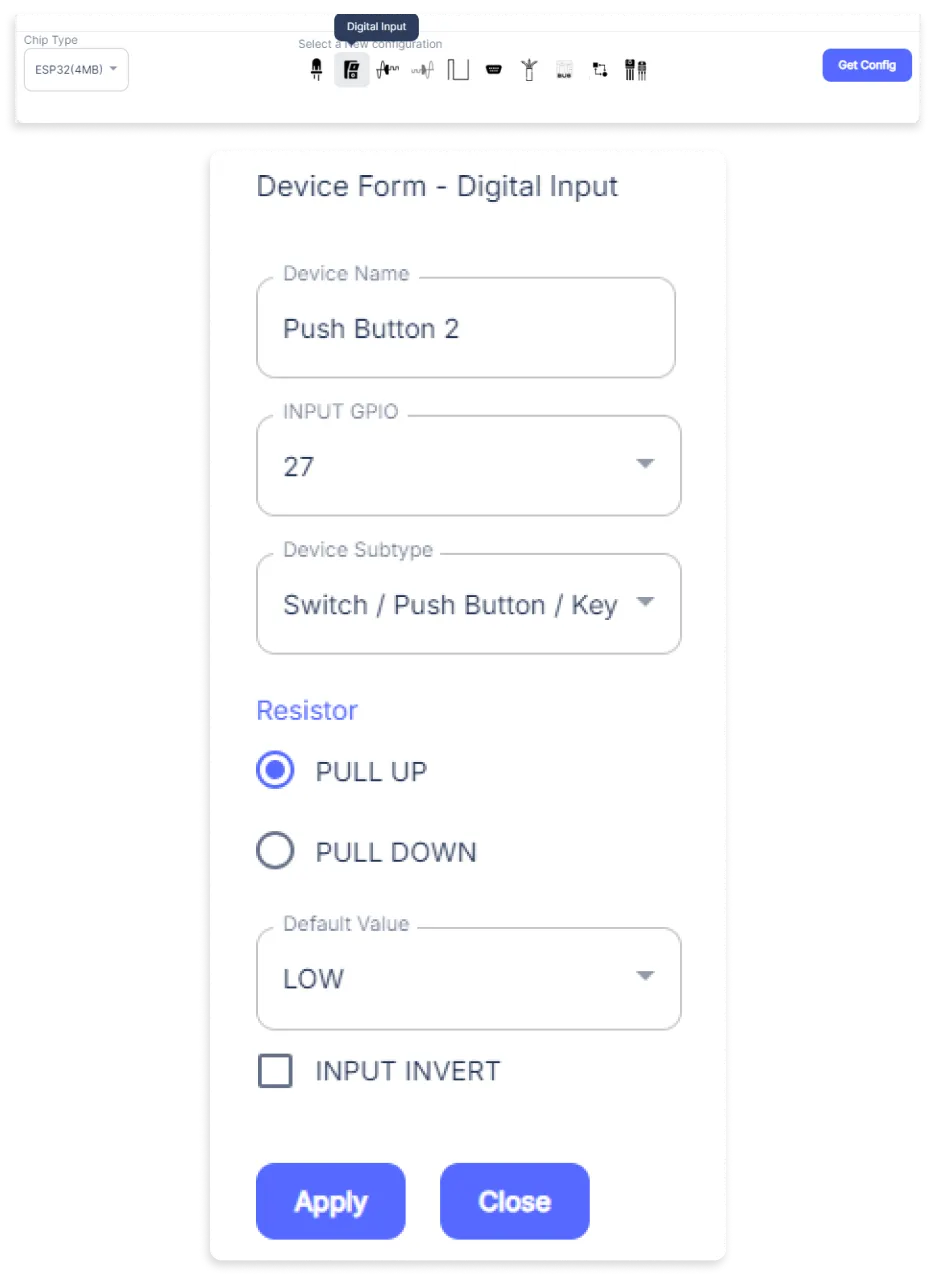
- A Digital Input window will open for inputting the following parameters:
- Set a Device name of your choosing. In our case, we set it to the Push Button 2.
- Set INPUT GPIO to 27.
- Set Device Subtype to Switch / Push Button / Key.
- Set Resistor to PULL UP.
- Then Click Apply Button.
- In the Device Configuration, tab click on Digital Output

- A Digital Output window will open for inputting the following parameters:
- Set a Device name of your choosing. In our case, we set it to Lamp 1.
- Set Device Subtype to Relay.
- Set OUT GPIO to 13.
- Set Resistor to PULL UP.
- Then Click Apply Button.
- In the Device Configuration, tab click on Digital Output.
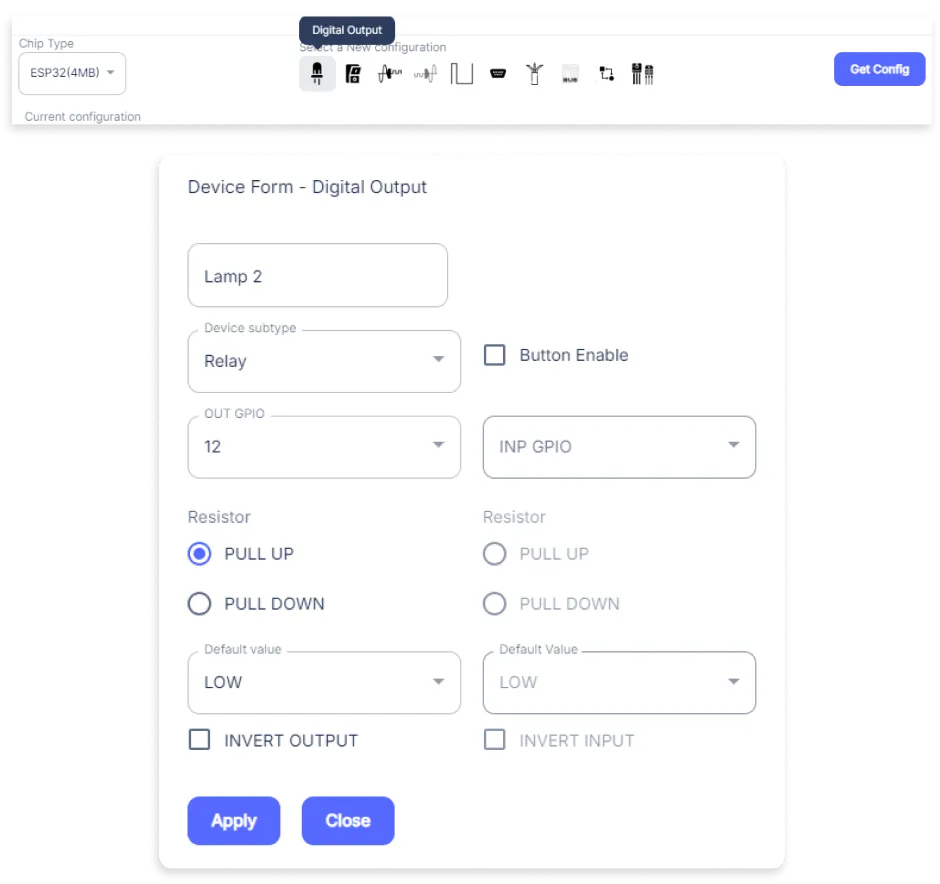
- A Digital Output window will open for inputting the following parameters:
- Set a Device name of your choosing. In our case, we set it to Lamp 2.
- Set Device Subtype to Relay.
- Set OUT GPIO to 12.
- Set Resistor to PULL UP.
- Then Click Apply Button.
- After clicking the apply button you can see a table of your setting in the device configuration tab.
- Press the Flash Device button.
- A window will appear on the bottom right side of the screen displaying “Please press BOOT button while flashing begins.”
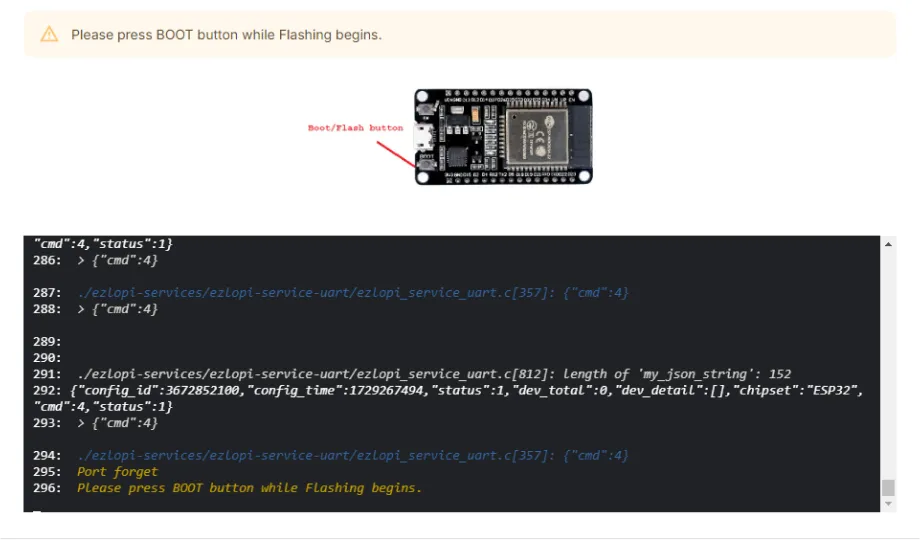
- Hold the BOOT button down until the next window appears on the bottom right side of the screen which says “Installation prepared. Please release the boot button now.”

- Release the BOOT button from your ESP32 when this pop-up on the bottom right window appears.
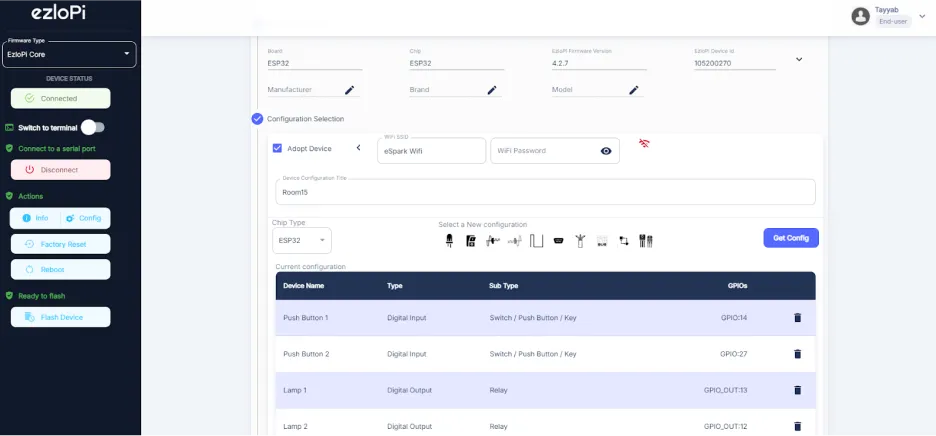
- After some time, a popup will appear saying Device Flashed Successfully! This means that your device has been set up successfully.
5. MiOS Web Dashboard
- After configuring the controller with the EzloPi web flasher, head to ezlogic.mios.com

- Use the same credential to log in that you used for configuring the controller with the web flasher.
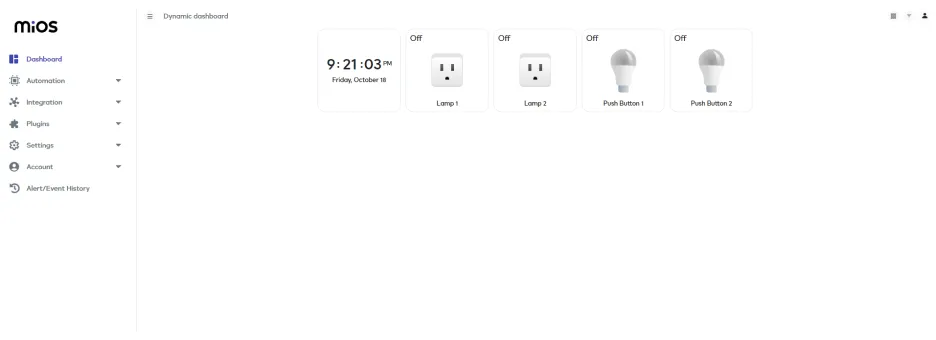
- In the MiOS web dashboard, you will be able to see the tiles for the push buttons and for the lamps which are outputs of 2-channel solid state relay. These tiles indicate the state of the solid state relay depending on whether the push buttons are being turned triggered as ON or OFF.
MeshBots:
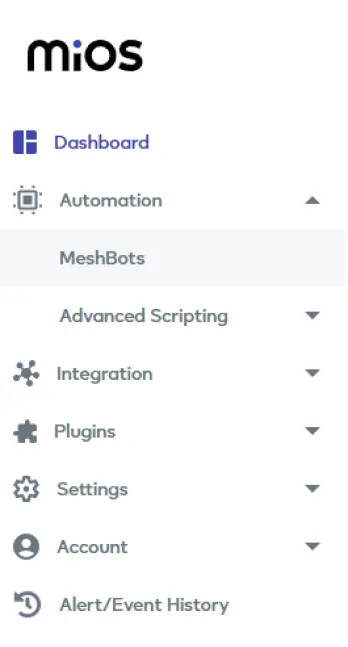
- On the left side of the screen under Automation, click on MeshBots.
- On meshbot screen, click on Create new MeshBot button present on the top right corner of the screen.
- After clicking on Create new MeshBot, you will see this now under Automation MeshBot click on Cloud.
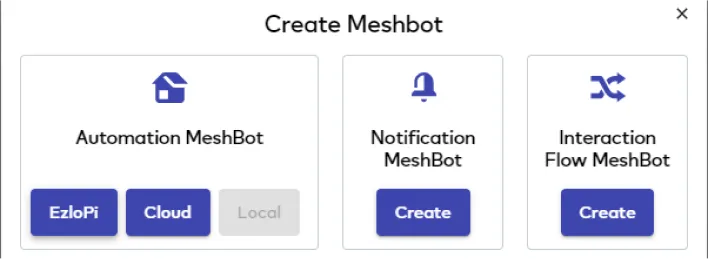
- On the next screen you will see that we can create a name of our choosing, in this case we write it as Test009.

- In the trigger tab you can set the TRIGGER for your device and in the ACTION tab you can set the action to be performed based on the trigger which you have created.

- Set these things in TRIGGER section:
- Set Node Type to Device.
- Set the Node to Push Button 1.
- Set the Capability to power.
- Set the Variables to status.
- Set the Comparator to Equal(==).
- Set the Value Type to value.
- Set the value to true.

- Set these values in the TRUE part of the ACTION section.
- Set Controllable Type to Device.
- Set the Controllable to Lamp 1.
- Set the Capability to power_command.
- Set the Value Type to set.
- Set the Value to true.
- Now Click the Save button.

- After clicking the save button you can see this screen on the top right corner of the screen.

- Again Create new meshbot by clicking on Create new MeshBot you will see this now under Automation MeshBot click on Cloud.
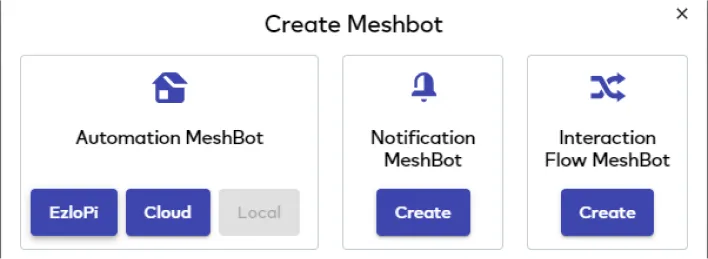
- On the next screen you will see that we can create a name of our choosing, in this case we write it as Test0009.
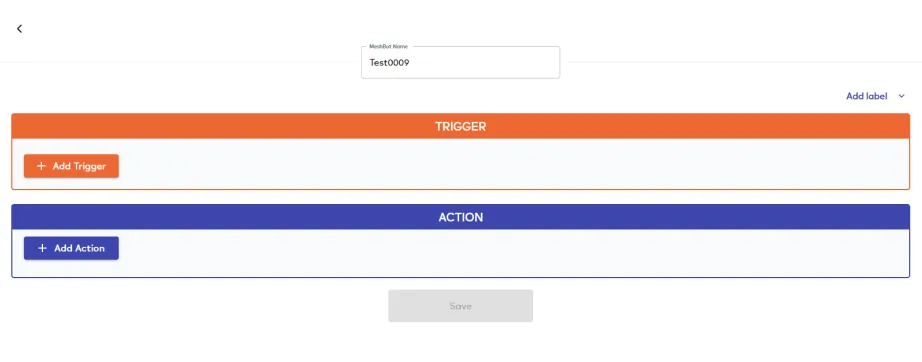
- In the trigger tab you can set the TRIGGER for your device and in the ACTION tab you can set the action to be performed based on the trigger which you have created.

- Set these things in TRIGGER section:
- Set Node Type to Device.
- Set the Node to Push Button 2.
- Set the Capability to power.
- Set the Variables to status.
- Set the Comparator to Equal(==).
- Set the Value Type to value.
- Set the value to true.

- Set these values in the TRUE part of the ACTION section.
- Set Controllable Type to Device.
- Set the Controllable to Lamp 2.
- Set the Capability to power_command.
- Set the Value Type to set.
- Set the Value to true.
- Now Click the Save button.

- After clicking the save button you can see this screen on the top right corner of the screen.

- Here you can see your saved MeshBot. Now click on Dashboard.
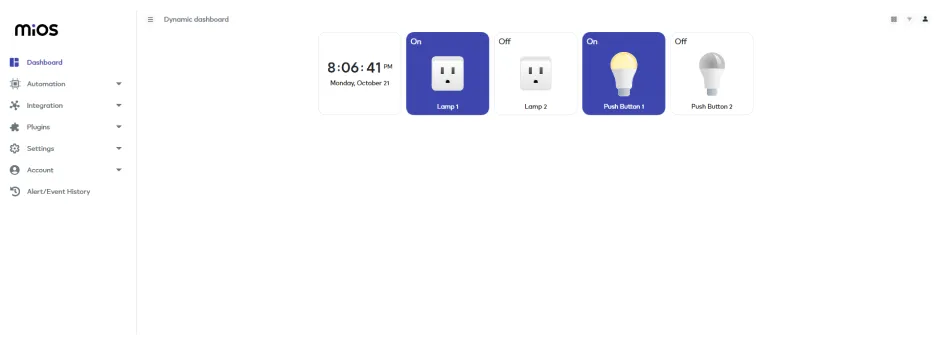
- Now, on the MiOS web dashboard, you can see that when the first push button is turned ON, the first channel of the SSR module which is connected to Lamp 1 gets turned ON, whereas the second push button is OFF therefore Lamp 2 which is connected to the second channel of SSR module also remains OFF because of the logic we have set in the meshbot.
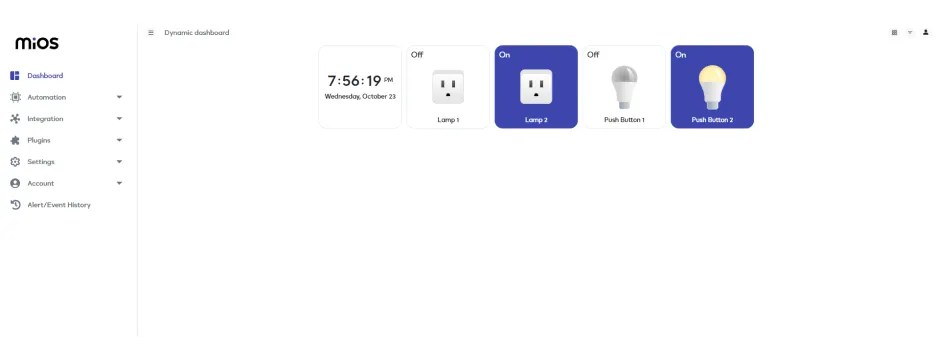
- Here, in the above picture, we can see that when second push button is turned ON, Lamp 2 which is connected to second channel of SSR module also turns ON while first push button is turned OFF therefore the Lamp 1 which is connected to first channel of the SSR is also turned OFF because of our meshbot settings.
6. MiOS App
You can download the MIOS Android app from the Google Play Store and Apple App Store.
- After downloading the app, proceed to install the application and open it.

- Using the MIOS mobile application, create a new Ezlo Cloud account using the sign-up option. If you already have an account, you may proceed to log in.

- After successfully logging in, you will be able to see the number of controllers connected such as a lamp, fan, or any other device in the MiOS app. Tap on any controller of your desired ID:
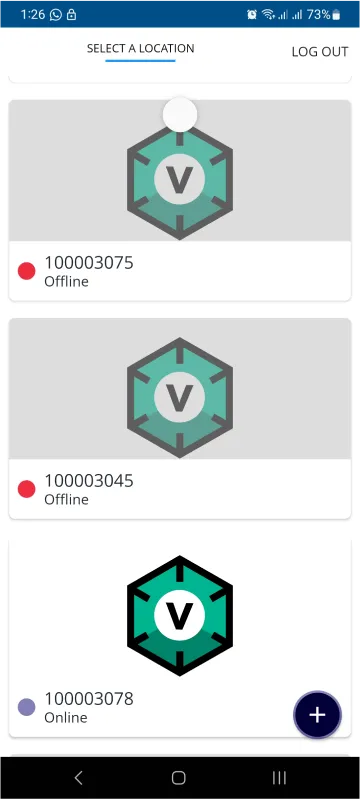
- You will be able to see the status of your controller whether it is online or offline. Access the device dashboard, and tap the device. The following view of the dashboard will appear:
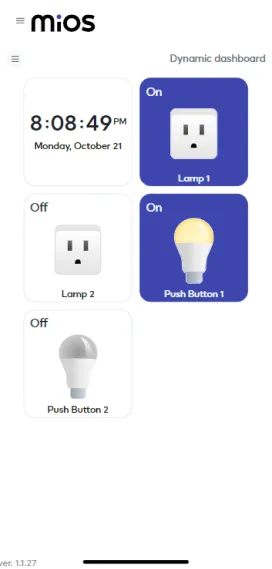
- On the MiOS mobile dashboard, you can see that when the first push button is turned ON, the first channel of the SSR module which is connected to Lamp 1 gets turned ON, whereas the second push button is OFF therefore Lamp 2 which is connected to the second channel of SSR module also remains OFF because of the logic we have set in the meshbot.
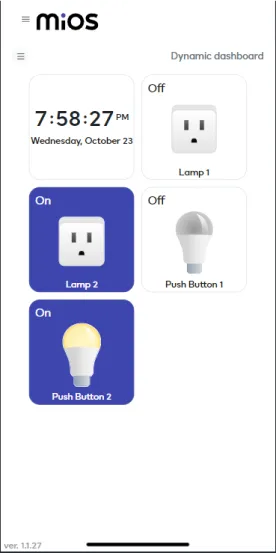
- Here, in the above picture, we can see that when second push button is turned ON, Lamp 2 which is connected to second channel of SSR module also turns ON while first push button is turned OFF therefore the Lamp 1 which is connected to first channel of the SSR is also turned OFF because of our meshbot settings.

eZlopie Products A single-channel 5V relay module $00.00

eZlopie Products Momentary switch $00.00

eZlopie Products Level Shifter Module (BSS138) $00.00

eZlopie Products ESP32
$00.00

eZlopie Products AC Lamp and Holder
$00.00











